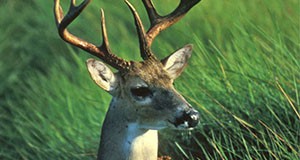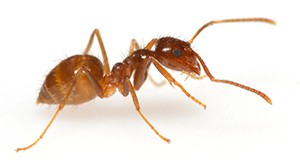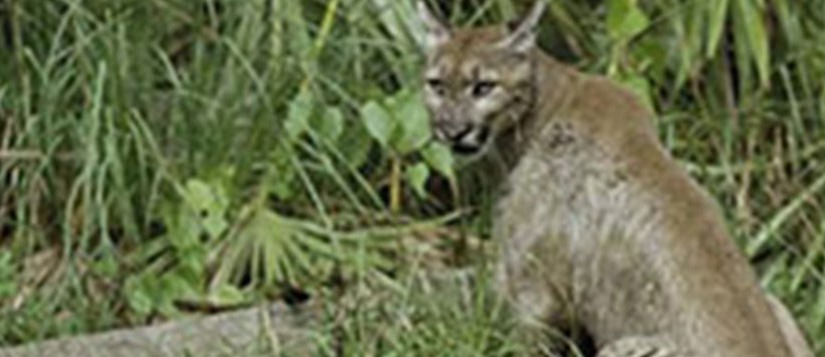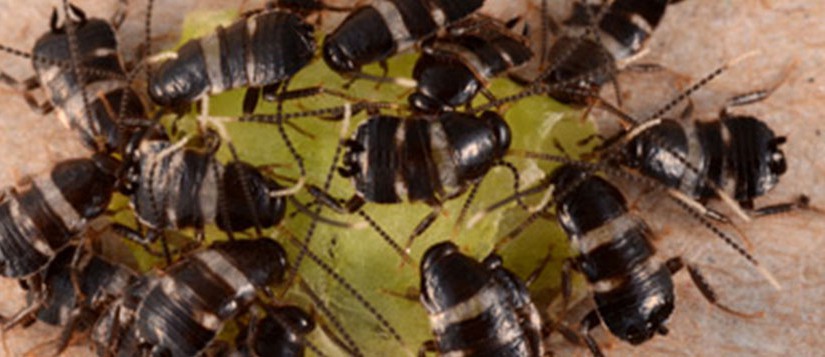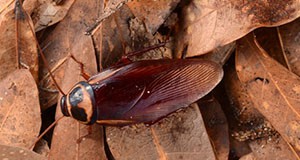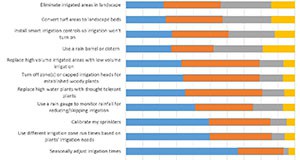 Florida’s economically important estuaries could be heavily impacted by sea-level rise and altered river flow, both caused by climate change. The resulting higher salinity, or saltiness of the water, could harm plants and animals, alter fish and bird habitat, and reduce the capacity of estuaries to provide such important services as seafood production and the protection of shorelines from erosion. This 6-page fact sheet explains the importance of estuaries, salinity in estuaries, and provides examples of stress from extreme high salinity. Then it explores the projected change in climate that could affect salinity in estuaries, how plants and animals would be affected, mitigating effects, and other impacts of climate change on estuaries. Written by Karl Havens, and published by the UF Department of Sea Grant, June 2015.
Florida’s economically important estuaries could be heavily impacted by sea-level rise and altered river flow, both caused by climate change. The resulting higher salinity, or saltiness of the water, could harm plants and animals, alter fish and bird habitat, and reduce the capacity of estuaries to provide such important services as seafood production and the protection of shorelines from erosion. This 6-page fact sheet explains the importance of estuaries, salinity in estuaries, and provides examples of stress from extreme high salinity. Then it explores the projected change in climate that could affect salinity in estuaries, how plants and animals would be affected, mitigating effects, and other impacts of climate change on estuaries. Written by Karl Havens, and published by the UF Department of Sea Grant, June 2015.
http://edis.ifas.ufl.edu/sg138
Category: Environment
Climate Change and Ecosystem Services of Florida's Largest Water Body: Lake Okeechobee
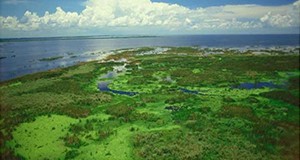 Future climate change could result in higher temperatures and greater evaporative water loss in Florida. If these changes are not compensated for by more rainfall, the state’s largest water body, Lake Okeechobee, could experience prolonged periods of very low water levels and catastrophic loss of its ecosystem services, which are the benefits that people receive from ecosystems. This 6-page fact sheet provides background, optimal and actual water levels, projected changes in South Florida climate & their effects on water levels in Lake Okeechobee, their effects on ecosystem services, and possible remedies. Written by Karl Havens, and published by the UF Department of Sea Grant, June 2015.
Future climate change could result in higher temperatures and greater evaporative water loss in Florida. If these changes are not compensated for by more rainfall, the state’s largest water body, Lake Okeechobee, could experience prolonged periods of very low water levels and catastrophic loss of its ecosystem services, which are the benefits that people receive from ecosystems. This 6-page fact sheet provides background, optimal and actual water levels, projected changes in South Florida climate & their effects on water levels in Lake Okeechobee, their effects on ecosystem services, and possible remedies. Written by Karl Havens, and published by the UF Department of Sea Grant, June 2015.
http://edis.ifas.ufl.edu/sg137
Climate Change and the Occurrence of Harmful Microorganisms in Florida's Ocean and Coastal Waters
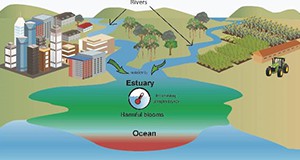 Climate change is expected to result in increased temperatures of nearshore ocean water, and this could lead to increased growth of harmful microorganisms. These include algae that form noxious or toxic blooms, including red tides, and bacteria and other pathogens. This situation could have negative consequences in regard to human health and also Florida’s ocean-related economy. This 6-page fact sheet discusses projected ocean temperatures, how harmful microorganisms living in the ocean might respond, and how this might affect people, and identifies actions that could be taken to reduce these impacts. Written by Karl Havens, and published by Florida Sea Grant, June 2015.
Climate change is expected to result in increased temperatures of nearshore ocean water, and this could lead to increased growth of harmful microorganisms. These include algae that form noxious or toxic blooms, including red tides, and bacteria and other pathogens. This situation could have negative consequences in regard to human health and also Florida’s ocean-related economy. This 6-page fact sheet discusses projected ocean temperatures, how harmful microorganisms living in the ocean might respond, and how this might affect people, and identifies actions that could be taken to reduce these impacts. Written by Karl Havens, and published by Florida Sea Grant, June 2015.
http://edis.ifas.ufl.edu/sg136
Some Challenges behind Communicating about Climate Change
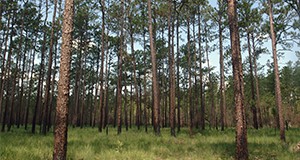 Media coverage of climate change can often leave the average person confused and unsure what to believe. However, as a trusted source of information and research, Extension has the opportunity to educate people about climate change and appropriate adaptation strategies in a scientific, unbiased way. This 5-page fact sheet outlines four challenges of climate change education. Written by Martha Monroe, Claire Layman Bode, and Mark A. Megalos, and published by the UF School of Forest Resources and Conservation, May 2015.
Media coverage of climate change can often leave the average person confused and unsure what to believe. However, as a trusted source of information and research, Extension has the opportunity to educate people about climate change and appropriate adaptation strategies in a scientific, unbiased way. This 5-page fact sheet outlines four challenges of climate change education. Written by Martha Monroe, Claire Layman Bode, and Mark A. Megalos, and published by the UF School of Forest Resources and Conservation, May 2015.
http://edis.ifas.ufl.edu/fr392
Managing Conflicts with Wildlife: Living with Coyotes
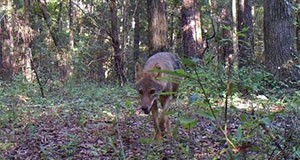 The omnivorous coyote is a relative newcomer to Florida that plays an important role in ecosystems and food webs. Of particular importance and possible benefit may be their potential ability to control populations of pest species such as some rodents. Although rare, there are situations where coyotes can become dangerous or damaging. In this 4-page fact sheet, we present some facts about coyotes, describe dangers and problems they may cause, and provide suggestions on how to cope with these issues. Written by Lauren Watine, William M. Giuliano, Holly K. Ober, Raoul Boughton, Alexander Gulde, Angeline Scotten, and published by the UF Department of Wildlife Ecology and Conservation, December 2014. (Photo: W. M. Giuliano, UF/IFAS)
The omnivorous coyote is a relative newcomer to Florida that plays an important role in ecosystems and food webs. Of particular importance and possible benefit may be their potential ability to control populations of pest species such as some rodents. Although rare, there are situations where coyotes can become dangerous or damaging. In this 4-page fact sheet, we present some facts about coyotes, describe dangers and problems they may cause, and provide suggestions on how to cope with these issues. Written by Lauren Watine, William M. Giuliano, Holly K. Ober, Raoul Boughton, Alexander Gulde, Angeline Scotten, and published by the UF Department of Wildlife Ecology and Conservation, December 2014. (Photo: W. M. Giuliano, UF/IFAS)
http://edis.ifas.ufl.edu/uw397
Managing Conflicts with Wildlife: Living with Deer
Though deer rarely pose problems for people, it is important to understand the issues associated with deer and human-deer interactions. This 4-page fact sheet describes the biology of Florida’s white-tailed deer, the hazards associated with deer, and how to minimize these risks. Written by William M. Giuliano, Holly K. Ober, Lauren Watine, and Raoul Boughton, and published by the UF Department of Wildlife Ecology and Conservation, December 2014.
http://edis.ifas.ufl.edu/uw398
Third Grade Manatee Curriculum
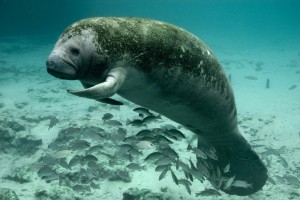
This 19 fact sheet curriculum series provides a series of individual lessons covering manatee biology and ecology, as well as highlighting some of the ways that humans impact and can protect manatees. The curriculum has been written at a third grade level but can be adapted for older or younger students. (Photo credit: Keith Ramos, USFWS)
http://edis.ifas.ufl.edu/topic_series_third_grade_manatee_workbook
Tawny Crazy Ant
As of 2012, tawny crazy ants have invaded 24 counties in Florida, parts of southeast Texas, and other areas of the southeastern U.S. The tawny crazy ant is considered a series pest. This species infests buildings and greenhouses, attacks crops, domestic animals, honeybee hives, displaces native ant species, and disrupts electrical equipment. This 3-page fact sheet covers the tawny crazy ant’s distribution, description, colonies, feeding habits, and pest status and control. Written by S. K. Hill, R. W. Baldwin, R. M. Pereira, and P. G. Koehler, and published by the UF Department of Entomology and Nematology, October 2013.
http://edis.ifas.ufl.edu/in1076
Florida Carpenter Ants
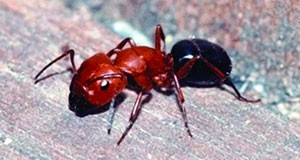 Carpenter ants are in the genus Camponotus, in which up to over 900 species have been described worldwide. They get their common name, “carpenter ant,” because some species excavate nests in wood. Carpenter ants are sometimes called bulldog ants or bull ants. However, not all species in the genus Camponotus are true carpenter ants because some nest in preformed cavities or in soil. This 5-page fact sheet was original published as part of Pests in and around the Florida Home, and was written by R. J. Vazquez, P. G. Koehler, R. M. Pereira, J. Warner, and R. H. Scheffrahn, and published by the UF Department of Entomology and Nematology, October 2013.
Carpenter ants are in the genus Camponotus, in which up to over 900 species have been described worldwide. They get their common name, “carpenter ant,” because some species excavate nests in wood. Carpenter ants are sometimes called bulldog ants or bull ants. However, not all species in the genus Camponotus are true carpenter ants because some nest in preformed cavities or in soil. This 5-page fact sheet was original published as part of Pests in and around the Florida Home, and was written by R. J. Vazquez, P. G. Koehler, R. M. Pereira, J. Warner, and R. H. Scheffrahn, and published by the UF Department of Entomology and Nematology, October 2013.
http://edis.ifas.ufl.edu/in1075
African Honey Bee: What You Need to Know
African honey bees entered the United States in the early 1990s and have since spread throughout the Southwest and Southeast, including parts of Florida. Compared to European bees, African bees are highly aggressive when disturbed and are more likely to sting humans and animals. This 6-page fact sheet covers the history and distribution of African honey bees in the Americas and explains how beekeepers and residents can manage their interactions with these bees. Written by H. Glenn Hall, Catherine Zettel-Nalen and James D. Ellis, and published by the UF Department of Entomology and Nematology, December 2014. http://edis.ifas.ufl.edu/mg113
How to Dissect Honey Bees (Apis mellifera L.) to Detect Tracheal Mites (Acarapis woodi Rennie)
Tracheal mites are parasites of the western honey bee and negatively impact the health and productivity of an infested colony. This 6-page fact sheet details the method of dissecting honey bees in order to diagnose tracheal mites. Written by John Bonkowski, Ashley N. Mortensen, and James D Ellis, and published by the UF Department of Entomology and Nematology, January 2015.
http://edis.ifas.ufl.edu/in1072
Managing Conflicts with Wildlife: Living with Panthers
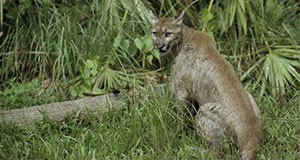 Panthers help maintain populations of some native species and control nuisance species such as wild hogs. They are generally secretive and rarely bother people, but there are rare situations where panthers can become dangerous or damaging. In this 4-page fact sheet, we present some facts about panthers, describe dangers and problems they may cause, and provide suggestions on how to cope with these issues. Written by William M. Giuliano, Holly K. Ober, Lauren Watine, Raoul Boughton, Eric Hellgren, Darrell Land, and Mark Lotz, and published by the UF Department of Wildlife Ecology and Conservation, December 2014.
Panthers help maintain populations of some native species and control nuisance species such as wild hogs. They are generally secretive and rarely bother people, but there are rare situations where panthers can become dangerous or damaging. In this 4-page fact sheet, we present some facts about panthers, describe dangers and problems they may cause, and provide suggestions on how to cope with these issues. Written by William M. Giuliano, Holly K. Ober, Lauren Watine, Raoul Boughton, Eric Hellgren, Darrell Land, and Mark Lotz, and published by the UF Department of Wildlife Ecology and Conservation, December 2014.
http://edis.ifas.ufl.edu/uw399
Australian cockroach Periplaneta australasiae Fabricius (Insecta: Blattodea: Blattidae)
Australian cockroaches are the most common outdoor cockroach in southern Florida. Though they typically stay outdoors, Australian cockroaches may also venture inside and live among humans. This 4-page fact sheet covers the Australian cockroach’s distribution and habitat, biology, medical risks to humans, and management as a pest. Written by Shiyao Jiang and Phillip E. Kaufman, and published by the UF Department of Entomology and Nematology, April 2015.
http://edis.ifas.ufl.edu/in1088
Seafood Knowledge, Perceptions, and Use Patterns in Florida: Findings from a 2013 Survey of Florida Residents
Over the past few years, consumers have begun to pay more attention to the nutritional benefits, sustainability, and environment impact of consuming seafood. However, media coverage of these concerns may leave consumers confused and uncertain about how they should incorporate seafood into their diets. In 2013, a survey was conducted to better understand Florida seafood consumer preferences, perceptions, and concerns. This 4-page fact sheet explains the survey’s findings and how they might help Extension deliver effective seafood-based education to Florida residents. Written by Lisa Krimsky, Charles Adams, and Bryan Fluech, and published by the UF Department of Food and Resource Economics, May 2015. http://edis.ifas.ufl.edu/fe965
Encouraging Landscape Water-Conservation Behaviors #1: Tailoring Programs To Florida Residents Who Use Irrigation in the Home Landscape
To better promote water-conservation practices among homeowners who irrigate their landscaping, Extension professionals must first have a clear understanding of this target audience’s habits, beliefs, and needs. This 10-page fact sheet recommends that Extension professionals analyze their audiences through several factors, including their interest in water conservation and knowledge of water issues and laws. Written by Laura A. Warner, Emmett Martin, Alexa Lamm, Joy Rumble, and Randall Cantrell, and published by the UF Department of Agricultural Education and Communication, May 2015. http://edis.ifas.ufl.edu/wc199
Managing Conflicts with Wildlife: Living with Wild Hogs
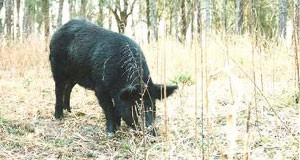 Wild hogs are a popular species, pursued and hunted by many throughout Florida. They are also an important food source for the endangered Florida panther.
Wild hogs are a popular species, pursued and hunted by many throughout Florida. They are also an important food source for the endangered Florida panther.
But there are situations where they can become dangerous or damaging. In this 4-page fact sheet, we present some facts about hogs, describe dangers and problems they may cause, and provide suggestions on how to cope with these issues. Written by William M. Giuliano, Holly K. Ober, Lauren Watine, Raoul Boughton, and Don Coyner, and published by the UF Department of Wildlife Ecology and Conservation, December 2014. (Photo: M.S. Smith)
http://edis.ifas.ufl.edu/uw400
Bot Canker of Oak in Florida Caused by Diplodia corticola and D. quercivora
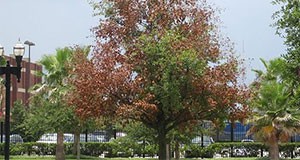 This 6-page fact sheet describes the emergence of these two pathogens of oak and grapevine in North America and Florida; the signs and symptoms of infection; mechanism of host disease and death; fungal morphology; origin, host range, and classification; and management options. Written by Sonja Mullerin and Jason A. Smith, and published by the UF Department of School of Forest Resources and Conservation, March 2015. (Photo: Jason Smith, UF/IFAS)
This 6-page fact sheet describes the emergence of these two pathogens of oak and grapevine in North America and Florida; the signs and symptoms of infection; mechanism of host disease and death; fungal morphology; origin, host range, and classification; and management options. Written by Sonja Mullerin and Jason A. Smith, and published by the UF Department of School of Forest Resources and Conservation, March 2015. (Photo: Jason Smith, UF/IFAS)
http://edis.ifas.ufl.edu/fr386
Managing Conflicts with Wildlife: Living with Alligators
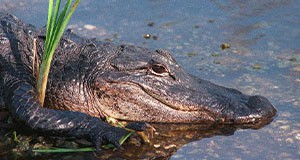 American alligators are found in only 10 states in the southeastern U.S. In most situations alligators do not harm people, but they can pose potential dangers to people in some situations. In this 3-page fact sheet, we present some facts about alligators, describe their potential threats to people and pets, and provide suggestions on how to cope with these risks. Written by Holly K. Ober, Harry J. Dutton, Allan R. Woodward, Lindsay J. Hord, and William M. Giuliano, and published by the UF Department of Wildlife Ecology and Conservation, November 2014.
American alligators are found in only 10 states in the southeastern U.S. In most situations alligators do not harm people, but they can pose potential dangers to people in some situations. In this 3-page fact sheet, we present some facts about alligators, describe their potential threats to people and pets, and provide suggestions on how to cope with these risks. Written by Holly K. Ober, Harry J. Dutton, Allan R. Woodward, Lindsay J. Hord, and William M. Giuliano, and published by the UF Department of Wildlife Ecology and Conservation, November 2014.
http://edis.ifas.ufl.edu/uw393
Managing Conflicts with Wildlife: Living with Bears
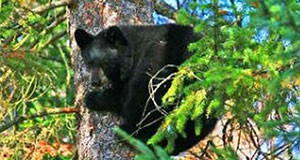 Black bears are omnivorous, enigmatic animals that help maintain healthy forests by dispersing seeds of plants they eat. Bear watching is a favorite pastime for many Floridians throughout the state. Bears are generally secretive and rarely a problem for people. But there are rare situations where they can become dangerous or damaging. In this 4-page fact sheet, we present some facts about bears, describe dangers and problems they may cause, and provide suggestions on how to cope with these issues. Written by William M. Giuliano, Holly K. Ober, Lauren Watine, Eric Hellgren, Raoul Boughton, and Dave Telesco, and published by the UF Department of Wildlife Ecology and Conservation, December 2014.
Black bears are omnivorous, enigmatic animals that help maintain healthy forests by dispersing seeds of plants they eat. Bear watching is a favorite pastime for many Floridians throughout the state. Bears are generally secretive and rarely a problem for people. But there are rare situations where they can become dangerous or damaging. In this 4-page fact sheet, we present some facts about bears, describe dangers and problems they may cause, and provide suggestions on how to cope with these issues. Written by William M. Giuliano, Holly K. Ober, Lauren Watine, Eric Hellgren, Raoul Boughton, and Dave Telesco, and published by the UF Department of Wildlife Ecology and Conservation, December 2014.
http://edis.ifas.ufl.edu/uw396
Managing Conflicts with Wildlife: Living with Frogs
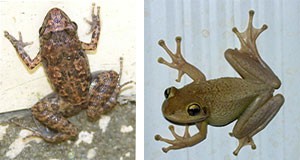 Frogs control garden pests such as insects and slugs and serve as a food source for many larger wildlife species. Research on the substances frogs secrete through their skins has even led to the creation of new painkillers and antibiotics. Most frogs in Florida are reclusive and harmless to people, but two species of frogs that have invaded Florida can be harmful to humans and their pets. This 4-page fact sheet presents some facts about native frogs, describes the problems invasive frogs cause, and provides suggestions on how to cope with problem frogs. Written by Steve Johnson, Holly K. Ober, and William M. Giuliano, and published by the UF Department of Wildlife Ecology and Conservation, November 2014. (Photos: Steve Johnson, UF/IFAS)
Frogs control garden pests such as insects and slugs and serve as a food source for many larger wildlife species. Research on the substances frogs secrete through their skins has even led to the creation of new painkillers and antibiotics. Most frogs in Florida are reclusive and harmless to people, but two species of frogs that have invaded Florida can be harmful to humans and their pets. This 4-page fact sheet presents some facts about native frogs, describes the problems invasive frogs cause, and provides suggestions on how to cope with problem frogs. Written by Steve Johnson, Holly K. Ober, and William M. Giuliano, and published by the UF Department of Wildlife Ecology and Conservation, November 2014. (Photos: Steve Johnson, UF/IFAS)
http://edis.ifas.ufl.edu/uw394
